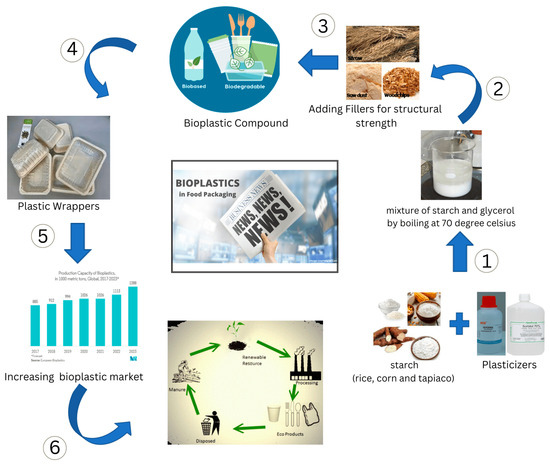Page Contents
Recycling is one of the simplest yet most impactful ways to contribute to a healthier planet. By reusing materials, reducing waste, and conserving natural resources, recycling plays a crucial role in mitigating environmental damage and combating climate change. Understanding the importance of recycling and incorporating it into daily life is essential for preserving our planet for future generations.
Why Recycling is Important
The importance of recycling goes beyond just waste management. It has far-reaching benefits for the environment, economy, and society. Here are the key reasons why recycling matters:
- Conserves Natural Resources: Recycling reduces the need for extracting raw materials, preserving forests, water, and minerals.
- Reduces Pollution: Proper recycling minimizes air, water, and soil pollution caused by waste.
- Saves Energy: Manufacturing products from recycled materials uses significantly less energy than producing them from scratch.
- Decreases Landfill Waste: Recycling diverts waste from overflowing landfills, freeing up space and reducing greenhouse gas emissions.
- Promotes a Circular Economy: By reusing materials, recycling supports sustainable production and consumption.
How Recycling Works
Recycling involves three main steps: collection, processing, and manufacturing. Each step is essential to ensure materials are efficiently reused.
1. Collection
- Curbside Pickup: Residents place recyclables in designated bins for collection by local authorities.
- Drop-Off Centers: Individuals bring recyclables to community recycling centers.
- Deposit Programs: Consumers return bottles and cans to retailers for refunds.
2. Processing
Collected materials are sorted, cleaned, and processed into raw materials for manufacturing. Advanced technologies like optical sorters and magnets improve efficiency.
3. Manufacturing
Recycled raw materials are used to produce new products, such as paper, packaging, and construction materials. Many everyday items, like aluminum cans and glass bottles, can be recycled multiple times.
Benefits of Recycling
1. Environmental Impact
- Reduced Deforestation: Recycling paper reduces the demand for virgin wood, saving trees and preserving wildlife habitats.
- Lower Carbon Footprint: Recycling metal and plastic reduces energy consumption and greenhouse gas emissions.
2. Economic Advantages
- Job Creation: Recycling industries create jobs in collection, sorting, and manufacturing.
- Cost Savings: Businesses and governments save money by reducing landfill and waste management expenses.
- Community Engagement: Recycling programs bring communities together to work towards a common goal.
- Educational Opportunities: Awareness campaigns promote environmental responsibility and inspire future generations to adopt sustainable practices.
How to Promote Recycling in Daily Life
1. Reduce, Reuse, Recycle
Adopt the 3Rs principle to minimize waste and maximize resources:
- Reduce: Avoid single-use items and buy only what you need.
- Reuse: Find creative ways to repurpose items instead of discarding them.
- Recycle: Sort and dispose of recyclables correctly.
2. Understand Recycling Symbols
Learn to identify recycling symbols on packaging to ensure proper disposal. Common symbols include:
- Mobius Loop: Indicates that a product is recyclable.
- Chasing Arrows: Specifies the type of material, such as plastic or metal.
3. Support Local Recycling Initiatives
Participate in community programs, such as:
- E-waste recycling drives.
- Composting workshops.
- Plastic bag and bottle return schemes.
Overcoming Challenges in Recycling
While recycling offers numerous benefits, challenges remain:
1. Contamination
Improper sorting of recyclables leads to contamination, rendering materials unusable. Educate yourself and others on proper recycling practices.
2. Lack of Awareness
Many people underestimate the importance of recycling. Raising awareness through education and media campaigns can inspire action.
3. Limited Infrastructure
Some regions lack adequate recycling facilities. Advocate for improved policies and situstoto infrastructure to expand recycling access.
The Future of Recycling
Advancements in technology and changing consumer habits are shaping the future of recycling. Key trends include:
1. Smart Recycling Systems
AI-powered sorting machines and IoT-enabled bins improve recycling efficiency and reduce human error.
2. Circular Economy Models
Businesses are adopting circular economy models to design products with recyclability in mind, ensuring minimal waste.
3. Biodegradable Materials
Research into biodegradable alternatives to plastics is paving the way for more sustainable packaging solutions.

The importance of recycling cannot be overstated. It is a simple yet powerful tool to combat environmental degradation, conserve resources, and promote sustainability. By embracing recycling in our daily lives and advocating for systemic changes, we can collectively build a cleaner, greener, and more sustainable future for generations to come.
READ MORE: Jus Anggur Segar: Minuman Sehat dan Nikmat







